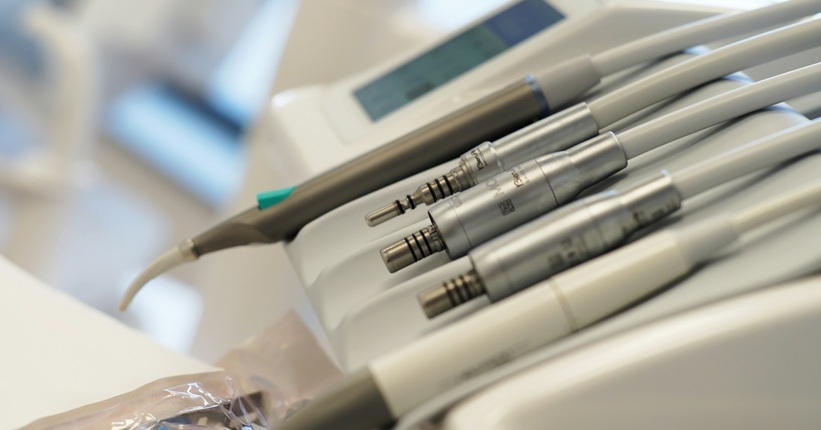
Removal of wisdom teeth — preparation for surgery and recovery
The removal of wisdom teeth, or so-called eights, is a procedure that sooner or later many people may encounter. Although the procedure itself is well known, proper preparation for surgery and proper recovery are equally important. How to prepare for the removal of eights? What to expect after the procedure? How to speed up healing and minimize discomfort? In the following text you will find answers to these questions and practical tips to help you go through the whole process as calmly as possible.
What is the procedure for removing the occiput?
The procedure for removing wisdom teeth differs depending on the individual situation of the patient and the position of the tooth, however, most often it proceeds according to a similar scheme:
- Consultation — it all starts with a visit to the dentist or maxillofacial surgeon, who evaluates the x-rays, checks the position of the teeth and anticipates possible difficulties.
- Anesthesia — before the procedure, local anesthesia is used, and in the case of removal of several teeth at once - general anesthesia.
- Access to the tooth If the tooth is partially or completely hidden in the gum, the doctor makes an incision and sometimes removes a small amount of bone.
- Tooth removal — the tooth is removed entirely or divided into fragments, which are then removed individually.
- Stitching — after extraction, the gum is sutured, usually with soluble sutures.
- Convalescence — after the procedure it is recommended to rest, use cold compresses and painkillers, and the diet should be based on soft or liquid foods.
- Control After a few days, you should go for a check-up to assess the healing process.
The removal of eights is recommended, among others, in case of pain, crowding of teeth, risk of infection or problems with tooth extraction. Most patients return to normal activity within a few days to a week.
How to prepare for the procedure?
Good preparation for the extraction of the octopus minimizes the risk of complications and promotes a faster recovery. Here are the most important steps:
- Consultation with a doctor — make sure you understand all the recommendations and don't hesitate to ask questions.
- Arrange transportation — After anesthesia, you should not drive a car, so ask someone for help.
- Prepare food — stock up on soft products (yogurts, soups, purees) that are easy to consume after the procedure.
- Avoid eating and drinking - if general anesthesia is prescribed, do not eat or drink for 6-8 hours before the procedure.
- Consult the medications you are taking — some of them, especially those affecting blood clotting, may require temporary withdrawal.
- Do not smoke — smoking impairs healing and increases the risk of complications.
- Organize care If you have children or pets, ask someone to help you in the first few days after the procedure.
- Prepare a place to rest Comfortable pillows and a slightly raised head during sleep will help reduce swelling.
- Stock up on medication — have prescribed painkillers and antibiotics on hand.
Benefits of removing eights
Although the extraction of eights can be a concern, it carries a number of health benefits:
- Prevention of tooth congestion — eights can displace other teeth, leading to their crooked alignment.
- Reducing the risk of infection and pain — improperly grown eights promote the accumulation of bacteria.
- Avoiding cysts and bone damage — Submerged teeth can cause cysts to form and damage the jaw bone.
- Caries protection — hard-to-reach eights are more prone to tooth decay.
- Improving overall health Oral infections can affect the entire body, including the heart or diabetes.
- Protecting Neighboring Teeth Eights can damage the roots of other teeth.
- Improving the comfort of life — elimination of pain and discomfort.
Recovery after surgery
The healing process after the removal of eights depends on the individual characteristics of the patient and the degree of complexity of the procedure. Most often:
- Swelling and pain — the greatest swelling occurs within 2-3 days after the procedure, and the pain gradually subsides.
- Bruises — can occur on the face, but usually disappear after a few days.
- Limited mouth opening This is natural and goes away after a few days.
- Bleeding Minor bleeding for a few hours after the procedure is normal.
- Recovery time — usually lasts from a few days to a few weeks.
It is important to follow the doctor's recommendations and monitor your well-being. In case of disturbing symptoms, such as severe pain, fever or prolonged bleeding, you should contact your doctor.
Recommendations after tooth extraction
- Use pain relievers and anti-inflammatory drugs according to the recommendations.
- Apply cold compresses to the cheek at the site of the procedure (20 minutes of compress, 20 minutes break).
- Eat soft, summery meals Avoid hot foods and drinks.
- Brush your teeth gently — avoid rinsing the mouth on the first day, then use a saline solution.
- Avoid smoking, alcohol and exercise during the first days.
- Do not drink through a straw and do not suck — this can cause the clot to fall out and the so-called “dry alveolus”.
- Control the seams — if they are insoluble, a follow-up visit will be necessary to remove them.
Proper preparation, care for oral hygiene and adherence to the doctor's recommendations are the key to a quick and trouble-free recovery after the removal of eights. Each organism reacts individually, so it is worth listening to your body and, if necessary, consult a doctor.
Content author

Dr. Jan Kempa
Dr. Jan Kempa is a passionate dentist who always cares about a good relationship with patients. His positive attitude makes even the most timid patients feel safe. He specializes in implantology and dental surgery, using modern treatment techniques. He is enthusiastic about using his own tissues to rebuild bones before implantation and to cover gum recession. Dr. Kempa always finds the time to listen to the patient and offers individual solutions.

Start treatment already today!
Make an appointment and discover why our patients recommend us to their loved ones. We will take the utmost care of your smile.


